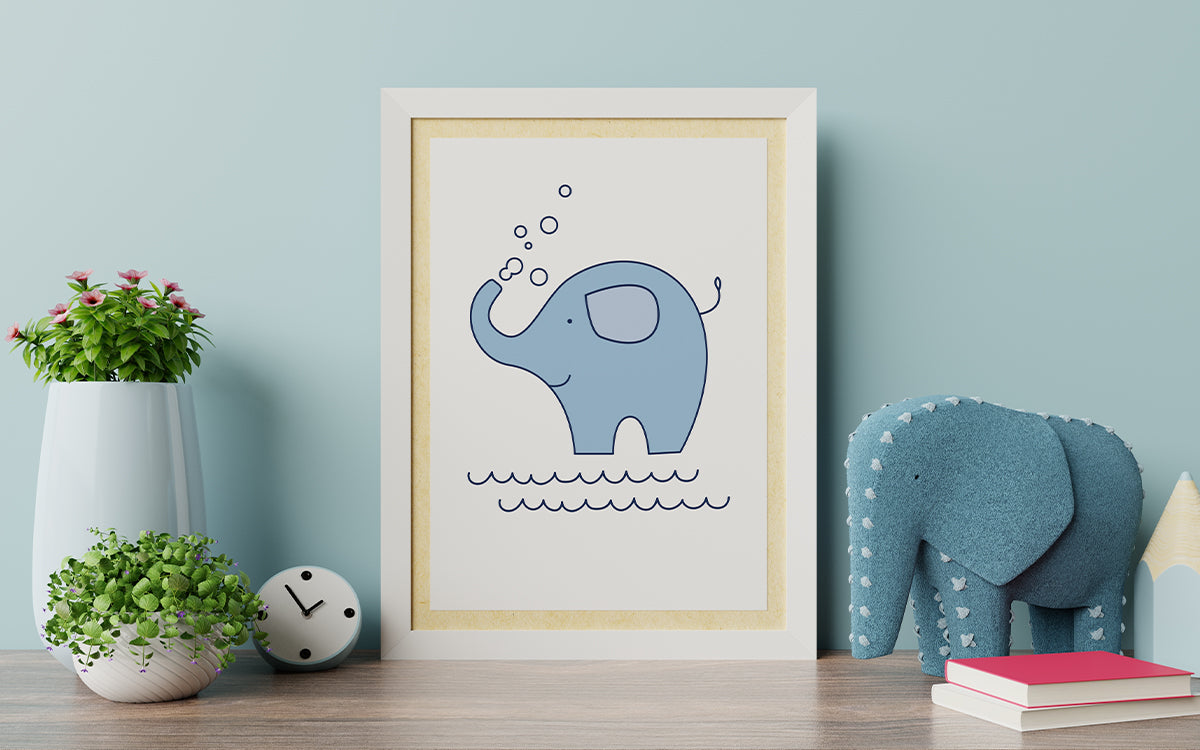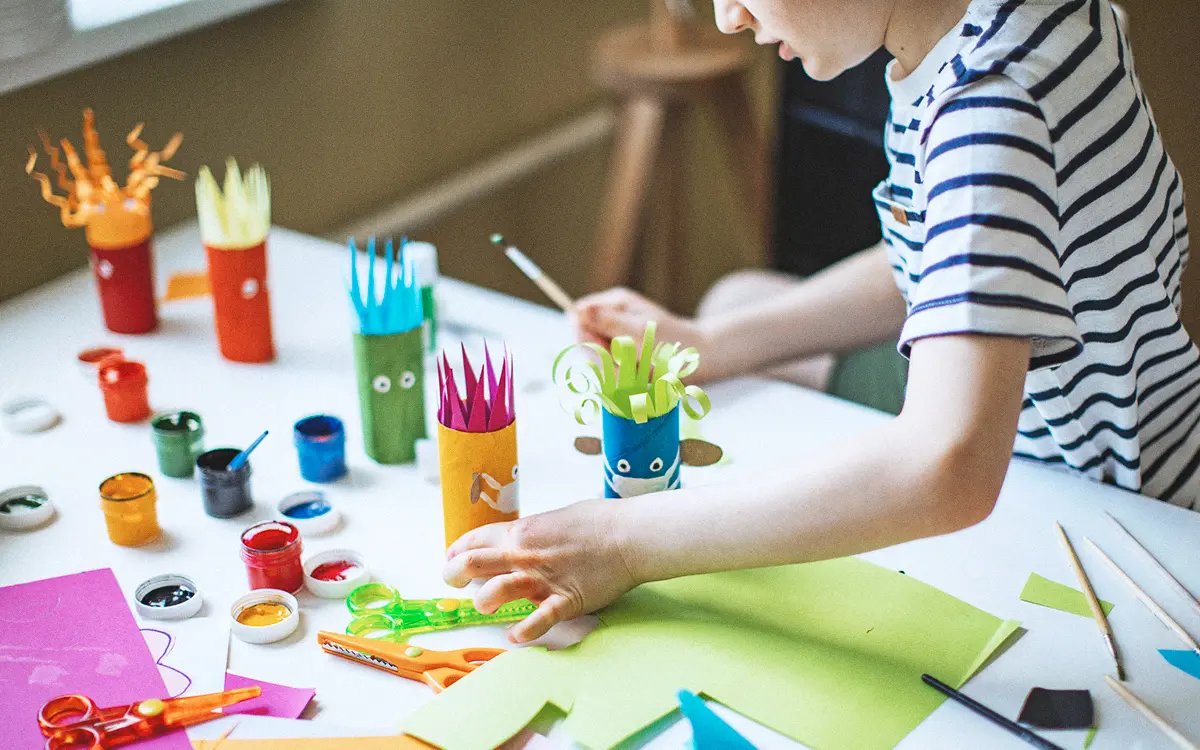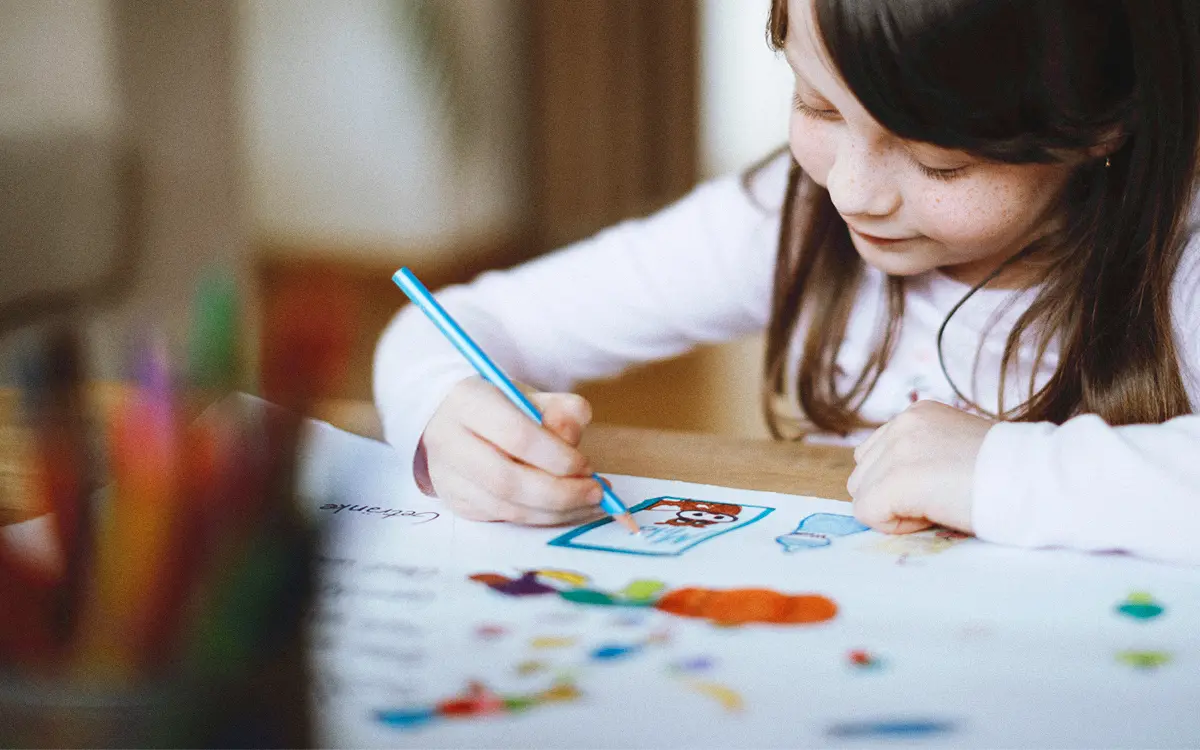Imagination is an important driving force for children's development. It not only enables creative play and colorful painting, but also makes challenging everyday situations easier.
Pink princesses, one-eyed giants, and heroes with superpowers – children are naturally blessed with a great imagination. A toothbrush becomes a spaceship, shampoo a secret weapon against monsters, or orange juice a magic potion that grants superpowers. Children's imaginations run like a thread through everyday family life. But what's the best way to encourage them? And how do you harness them to keep a cool head in difficult situations, such as when your child is being stubborn in the bathtub? Bübchen and children's book author Angelika Bartram explain the background and share their best tips and tricks on the subject of imagination.
What is fantasy and how does it develop?
Angelika Bartram: Imagination is a special developmental force that helps overcome various challenges in life. Especially for young children, the world is still full of mysteries, and their imagination helps them fill in the gaps in their knowledge. During this magical, fantastical phase, children create their own worlds. Here, they can experience the most amazing adventures and gain self-confidence. Normal logic is suspended. That's why fairy tales and fantastic stories with role models and heroes are so important for developing children's imaginations.
What is the best way to encourage a child’s imagination?
Three "fantasy boosters" help: Perceiving, appreciating, and developing. Perceiving means recognizing when fantasy is at play. Appreciating means putting your own realistic logic aside and entering this fantastical realm. This affirms children and increases the fun of persevering. To foster imagination, parents can join in and encourage their children to continue fantasizing. This encourages children to develop and strengthen this powerful ability.
Why is it so important to further develop this skill? How does imagination influence a child's development?
Imagination is a highly effective developmental aid, providing a great deal of joy, encouraging creative thinking, and creating space for the generation of ideas. Imagination makes problems easier to solve because it opens up the possibility of unconventional approaches. Above all, imagination deepens emotional development. Children can easily identify with characters from fairy tales or fantasy stories, thus building self-confidence.
How can you inspire a child to play imaginatively?
It works best when a child is stimulated to develop their own creative imagination through fairy tales and fantastic stories. Then a bubble bath can become a fantastical foam kingdom in which foam creatures rapidly transform. For example, it could be the kingdom of Shaschipuh, the Shampoo King, who guards a special treasure: magic foam. With the help of this magic foam, you can transform yourself into whatever you create with it, for example, into a magician with a magic hat or a lion with an incredible lion's mane.
Does imagination fade after a certain age? How can I deal with it?
It's a normal developmental step for children to move beyond the fantasy phase as they grow older and increasingly want to grasp things in a more realistic way. However, this doesn't mean that their imagination disappears. It shifts to other areas that can be encouraged, such as music, painting, crafts, or theater.
How can you best use your imagination to calmly master stressful everyday situations with your child?
Parents can harness the magic of heroes, role models, and stories through role-playing. A cloth can become a "fairy cloth," which develops pain-relieving "fairy powers" when a child bumps something. Sometimes it can also be effective to let someone else speak for them, such as an imaginary hero from the shower gel packaging in the bathtub or a teddy bear demonstrating how to get dressed. When parents support these approaches, children feel accepted with their imagination and their way of coping with reality.
How do I motivate my child to do unpleasant things like washing their hair or brushing their teeth in an imaginative way?
The key here is to find a playful hook. This will distract the child from their "I don't want that" attitude. They will become curious about the story behind it, and ideally, they will be infected by the fun this imaginative approach promises, and thus approach this once unpleasant activity in a completely different way.
What role do fantasy figures or role models, such as heroes, play in everyday life with the child?
Fantasy characters and heroes offer examples for action. They demonstrate how to face challenges, even when you feel small and weak. They prove that you can accomplish things if you believe in yourself. They provide models that strengthen self-confidence.
How can you use imagination to help a child overcome their fear of a certain situation, for example, if they don't want to shower or bathe? Is there a particular method you would recommend?
One option is to turn the bathing experience into a game. Fun plastic swimming buddies or funny fantasy heroes on shower products can help, bringing them to life in creative stories.
Is a child's imagination alone sufficient to develop fantasy, or does it make sense to incorporate additional tools?
Tools such as heroic characters, small puzzles, or coloring books offer ideal opportunities for developing imagination as broadly as possible. By encouraging the use of imagination, they simultaneously promote this ability. In this sense, they offer good imagination training.

Über den Experten
Angelika Bartram
Angelika Bartram is an actress, director, and author who has wanted to tell stories and act since she was a child. Albert Einstein's saying "Imagination is more important than knowledge" is very dear to her heart. Therefore, she has summarized her experiences with imagination and creativity in her new book: "Let the Children Dream – Why Imagination Is More Important Than Knowledge."





